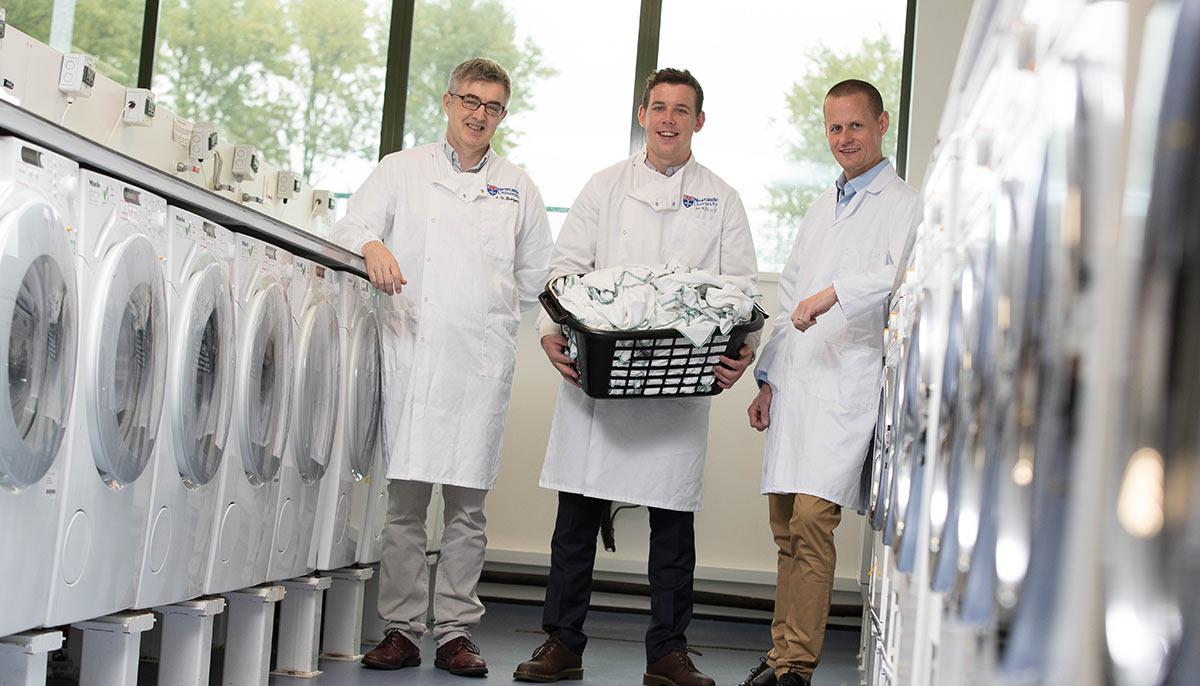New research led by Newcastle University has shown that it is the volume of water used during the wash cycle, rather than the spinning action of the washing machine, that is the key factor in the release of plastic microfibers from clothes. Stop using the delicate wash cycle to help save our seas.
Millions of plastic microfibers are shed every time we wash clothes that contain materials such as nylon, polyester, and acrylic. Because these fibers are so small, they drain out of our washing machines and can ultimately enter the marine environment.
Once in the ocean, they are ingested by the animals living there and two years ago, Newcastle University scientists showed for the first time these fibers have now reached the deepest parts of our ocean.

800,000 more fibers are released in a delicate wash cycle
Working with Procter & Gamble in Newcastle, the team measured the release of plastic microfibers from polyester clothing for a range of cycles and water volumes. Counting the fibers released, the team found the higher the volume of water the more fibers released, regardless of the speed and abrasive forces of the washing machine.
In fact, they found that on average, 800,000 more fibers were released in a delicate wash cycle than in a standard cycle. Publishing their findings today in the academic journal Environmental Science and Technology, Ph.D. student Max Kelly, who led the research, explained:
“Counterintuitively, we discovered that ‘delicate’ cycles release more plastic microfibers into the water, and then the environment, than standard cycles.
“Previous research has suggested the speed the drum spins at, the number of times it changes spinning direction during a cycle and the length of pauses in the cycle — all known as the machine agitation — is the most important factor in the amount of microfiber released.
“But we have shown here that even at reduced levels of agitation, microfiber release is still greatest with higher water-volume-to-fabric ratios.
“This is because the high volume of water used in a delicate cycle which is supposed to protect sensitive clothing from damage actually ‘plucks’ away more fibers from the material.”
Plastic pollution in the ocean
Plastic pollution is one of the biggest challenges facing society today and understanding the key sources is an important process to help reduce our impact on the environment.
Laundry has been recognized as a major contributor to microplastics, but until now, precisely measuring the release of these fibers has been difficult due to the fact that it’s almost impossible to accurately simulate the reality of what happens in people’s machines in a lab setting.

Using a tergotometer — a benchtop device comprised of eight (1000 ml) washing vessels that simulate full-scale domestic washing, the team was able to carry out tests under different conditions, making changes to water volume, spin speed, temperature, and time.
A DigiEye camera — a digital color imaging system — was then used to accurately calculate the amount of microfibers released.
To test whether the observations made using the tergotometers were reflective of full-size domestic washing machines, the team then tested the fabrics on a delicate wash cycle using identical washing machines in the test center at Procter and Gamble (P&G).
The team showed that previous recommendations by groups to move toward high water volumes and low levels of agitation as a way of reducing the amount of microfiber released was actually making the problem worse
‘It’s the small changes that make a huge difference’
Neil Lant, Research Fellow at P&G and co-author of the study, said:
“The appliance industry has started to introduce microfiber filters in some new washing machines and the textile industry is looking to reduce the fiber shedding levels of new clothing.
“We hope that the issue will ultimately be solved by such actions, and our work on the mechanistic causes will help in the development of these solutions.”
Max Kelly adds:
“Reducing the amount of plastic pollution is everyone’s responsibility and often it’s the small changes that make a huge difference.
“By avoiding high water-volume-to-fabric washes such as the delicate cycles and ensuring full wash loads then we can all do our bit to help reduce the amount of these synthetic fibers being released into the environment.
“Hopefully, these findings may also be used by manufacturers to influence the design of future washing machines and reduce our plastic footprint. Over time these changes could also see a global reduction in the amount of energy and water required to wash our clothes.”
Provided by: Newcastle University [Note: Materials may be edited for content and length.]







